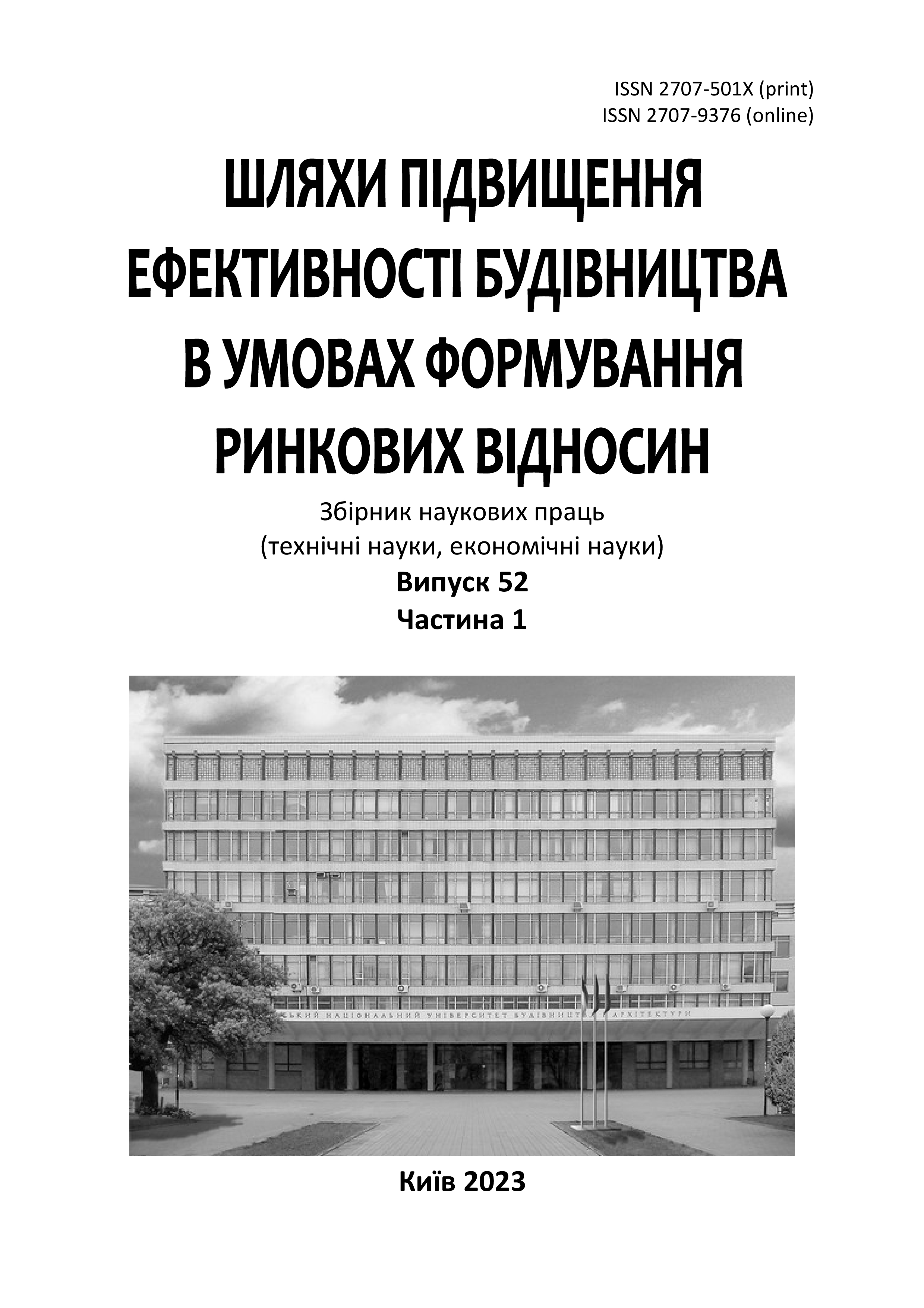Increase of bearing capacity concrete elements of building structures on compression
DOI:
https://doi.org/10.32347/2707-501x.2023.52(1).3-11Keywords:
cement, calcium carbonate, gypsum, surfactants, strength, catalysisAbstract
The article describes the results of determining the influence of ultra-small doses of surface-active substances on the strength of artificial stone obtained from a mixture of nanopowders. the purpose of the work is to determine the effectiveness of the use of surface-active substances in ultra-small doses during the hardening of a mixture of cement nanopowder and calcium carbonate and gypsum nanopowder. The methodology of conducting experiments includes the following methods: analysis of studies on the use of nanopowders and surface-active substances; standard methods of testing building materials; comparative analysis; systematization and generalization of foreign and domestic experience. As a result of the research, the influence of surface-active substances applied in ultra-small doses on the strength of the artificial stone formed as a result of the hardening of nanopowder of calcium carbonate and cement was determined. It has been proven that in this case, the action of ultra-small doses of surface-active substances consists in reducing the number of open pores in the cement stone. Experimental studies have confirmed that molecules of surface-active substances, such as hyperplasticizers or others, significantly change the pH of the water used to make concrete. Increasing the mechanical strength of the obtained artificial stone allows replacing part of the cement nanopowder with a cheaper mineral nanopowder. It was established that an increase in the water-cement ratio in the mixture of nanopowders leads to an increase in the effectiveness of ultra-small doses of surface-active substances in the formation of compressive strength. The highlighted scientific materials became the starting point for understanding the researched issue. The effect of ultra-small doses of surface-active substances on the strength of artificial stone obtained from a mixture of nanopowders was identified and substantiated. The results of the research can be used in the production of concrete and reinforced concrete products and structures.
References
Shуshkina А., Shуshkin А. Study of the nanocatalysis effect on the strength formation of reactive powder concrete. Eastern-European Journal of Enterprise Technologies. 2016. 1/6(79). Р. 55-60. https://doi.org/10.15587/1729-4061.2016.58718
Shyshkina A., Shyshkin А. Fine-Grained Concrete for Repair and Restoration of Building Structures. Materials Science Forum. 2021.Vol. 1038. P. 317-322. doi:10.4028/www.scientific.net/MSF.1038.317
Shishkina A., Shishkin A. Application of the easy concentration effect in concrete technology. IOP Conference Series: Materials Science and Engineering. 2020. 907: 012038. DOI 10.1088/1757-899X/907/1/012038
Shyshkin A., Shyshkina A. Аpplication of colloid surface-active substances as a nanocatalyst of reactions cement hydration. European Journal of Applied Sciences, 2021. 9(5). Р. 83-99. DOI: https://doi.org/10.14738/aivp.95.10888
Shishkina A. Shishkin A.. Study of the effect of micellar catalysis on the strength of alkaline reactive powder concrete. Eastern-European Journal of Enterprise Technologies. 2018. 3/6(93). Р. 46-51. DOI: https://doi.org/10.15587/1729-4061.2018.133445
Berezin I.V., Martinek K., Yatsimirsky A.K. Physicochemical foundations of micellar catalysis. Russ. Chem. Rev. 1973, 42(10). Р. 1729-1756. https://doi.org/10.1070/RC1973v042n10ABEH002744.
Шишкина А.А., Шишкин А.А. Влияние модифицированного каолина на прочность порошкового бетона. Науковий вісник будівництва. 2018. Т. 91, №1. С. 169-172.
Деревянко В.Н., Чумак А.Г., Тельянов В.А., Кондратьева Н.В. Наномодификация структуры гипсовых вяжущих. Вісник Придніпровської державної академії будівництва та архітектури. 2012. №6. С. 31–36.
Королев Е.В. Нанотехнология в строительном материаловедении. Анализ состоияния и достижений. Пути развития. Строительные материалы. 2014. №11. С. 47–79.
Ashani H.R., Parikh S.P., Markna J.H. Role of nanotechnology in concrete a cement based material: a critical review on mechanical properties and environmental impact. International Journal of Nanoscience and Nanoengineering. 2015. 2(5), 32–35.
Byung-Wan Jo, Chang-Hyun Kim, Ghi-ho Tae, Jong-Bin Park. Characteristics of cement mortar with nano-SiO2 particles. Construction and Building Materials. 2007. Vol. 21, Issue 6. P. 1351-1355. https://doi.org/10.1016/j.conbuildmat.2005.12.020
Morsy M.S., Alsayed S.H., Aqel M. Effect of Nano-clay on Mechanical Properties and Microstructure of Ordinary Portland Cement Mortar. International Journal of Civil & Environmental Engineering IJCEE-IJENS. 2009. Vol. 10. No. 01. Р. 23–27.
Shah S.P., Mondal P., Ferron R.P., Tregger N., Sun Z. Next horizon in high performance concrete: Self-consolidating concrete and nanotechnology. Indian Concrete Journal, 2008, 82(1), 9-21.
Толмачев С.Н., Беличенко Е.А. Перспективы применения наночастиц в бетонах транспортного назначения. Строительные материалы и изделия. 2017. № 1-2. С. 38-41.
Downloads
Published
How to Cite
Issue
Section
License

This work is licensed under a Creative Commons Attribution 4.0 International License.
Authors who publish with this journal agree to the following terms:
- Authors retain copyright and grant the journal right of first publication with the work simultaneously licensed under a Creative Commons Attribution License that allows others to share the work with an acknowledgement of the work's authorship and initial publication in this journal.
- Authors are able to enter into separate, additional contractual arrangements for the non-exclusive distribution of the journal's published version of the work (e.g., post it to an institutional repository or publish it in a book), with an acknowledgement of its initial publication in this journal.
- Authors are permitted and encouraged to post their work online (e.g., in institutional repositories or on their website) prior to and during the submission process, as it can lead to productive exchanges, as well as earlier and greater citation of published work (See The Effect of Open Access).

